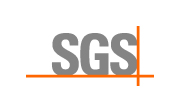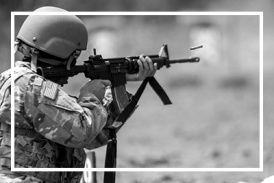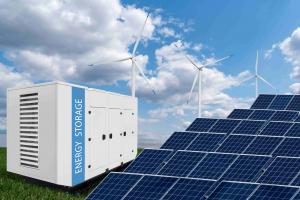SGS Launches First AI-Powered Thermal Runaway Testing Solution for Energy Storage Batteries

Working in collaboration with the Chongqing Energy College (CEC), SGS in China developed the solution to help address fire safety concerns around the rapid global growth of battery energy storage systems (BESS) in commercial, industrial and residential sectors.
Thermal runaway can cause uncontrollable increases in temperature and pressure within a battery cell leading to fires or explosions. SGS’s thermal runaway testing solution aligns with ANSI/CAN/UL 9540A:2025 standard to assess thermal runaway fire propagation in BESS and provide essential data on potential risks during thermal runaway events.
The breakthrough solution, now in operation at SGS’s Chongqing Renewable and Advanced Energy Laboratory, leverages deep learning technology to customize the data processing of temperature, voltage, gas emissions, and combustion collected during tests. The company’s proprietary algorithms automatically adjust testing parameters, synchronously collect data in real-time, and employ computer vision based on deep learning models like Yolo, TensorFlow, ResNet, and VGG to detect smoke and fire occurrences, minimize manual intervention and enhance accuracy.
Walter Zheng, Connectivity & Products, SGS said: “Thermal runaway incidents, have become critical challenges in the industry and we are delighted to launch our fully automated testing solution which addresses the need for internationally accredited safety testing, faster certification turnaround and improved test transparency.
“With automated data processing, our customers benefit from faster access to market, reduced costs and higher testing precision to ensure reduced risk and greater competitiveness.”
Key features of SGS’s thermal runaway testing system include:
Full automation – centralized software controls all testing equipment, automates initialization, parameter adjustments, and data collection, freeing personnel from manual operations
Smart detection and recording – advanced computer vision accurately identifies and logs smoke and fire events, ensuring reliable data
Enhanced safety – automation reduces personnel exposure to hazardous conditions, ensuring laboratory safety
In 2022, SGS’s Chongqing Renewable & Advanced Energy Laboratory successfully obtained the ISO/IEC 17025 accreditation, becoming the first lab in China accredited to offer testing services according to UL9540A standards.
Chongqing Energy College, established in April 2009, is a full-time non-governmental college that is approved by the Chongqing Municipal Government and filed by the Ministry of Education.
SGS renewable and advanced energy innovation solutions
Within its Renewable and Advanced Energy Lab, SGS has developed multiple digital and innovation solutions under the TeREES® L2 framework (Testing Resource eco-Efficiency Enhancement Solutions), a digital innovation platform initiated by SGS. These include:
* Automated testing system for EV Chargers
* Automated testing system for Power Conversion Systems (PCS)
TeREES® L2 combines laboratory operational technology, information technology and testing, inspection and certification know-how to digitize and enhance the entire lab operation process.
Through transparent, real-time process management, intelligent test scheduling, and advanced data analytics, TeREES® L2 helps significantly shorten product time-to-market, reduce compliance costs and strengthen quality assurance to support the renewable energy industry's need for speed, safety and sustainability.
Learn more about Navigating the Challenges of Energy Storage Systems | SGS
About SGS
SGS is the world’s leading Testing, Inspection and Certification company. We operate a network of over 2,500 laboratories and business facilities across 115 countries, supported by a team of 99,500 dedicated professionals. With over 145 years of service excellence, we combine the precision and accuracy that define Swiss companies to help organizations achieve the highest standards of quality, compliance and sustainability.
Our brand promise – when you need to be sure – underscores our commitment to trust, integrity and reliability, enabling businesses to thrive with confidence. We proudly deliver our expert services through the SGS name and trusted specialized brands, including Brightsight, Bluesign, Maine Pointe and Nutrasource.
SGS is publicly traded on the SIX Swiss Exchange under the ticker symbol SGSN (ISIN CH1256740924, Reuters SGSN.S, Bloomberg SGSN:SW).
Jackie Brown - PR Account Executive
Sugarloaf Marketing Ltd.
+44 7792 970919
jackie|sugarloafmarketing.com| |jackie|sugarloafmarketing.com
Legal Disclaimer:
EIN Presswire provides this news content "as is" without warranty of any kind. We do not accept any responsibility or liability for the accuracy, content, images, videos, licenses, completeness, legality, or reliability of the information contained in this article. If you have any complaints or copyright issues related to this article, kindly contact the author above.
One Week Until SPiCE Southeast Asia 2025 Connects People with Top Industry Leaders
Atlanta Community Food Bank Featured in National Report Highlighting Health Outcomes From 'Food As Medicine' Program
San Diego Comic-Con Fans Discover Why L. Ron Hubbard Books Remain Popular
Więcej ważnych informacji
 Jedynka Newserii
Jedynka Newserii

 Jedynka Newserii
Jedynka Newserii

Polityka

D. Joński: Nie wiemy, co zrobi Rosja za dwa–trzy lata. Według duńskiego wywiadu może zaatakować kraje nadbałtyckie i musimy być na to gotowi
Zdecydowana większość krajów unijnych wskazuje na potrzebę wzmocnienia zdolności obronnych Europy w obliczu coraz bardziej złożonego geopolitycznego tła. Wywiady zachodnich państw wskazują, że Rosja może rozpocząć konfrontację z NATO jeszcze przed 2030 rokiem. Biała księga w sprawie obronności europejskiej „Gotowość 2030” zakłada m.in. ochronę granic lądowych, powietrznych i morskich UE, a sztandarowym projektem ma być Tarcza Wschód. – W budzeniu Europy duże zasługi ma polska prezydencja – ocenia europoseł Dariusz Joński.
Transport
Duże magazyny energii przyspieszą rozwój transportu niskoemisyjnego w Europie. Przyszłością może być wodór służący jako paliwo i nośnik energii

Zmiany w europejskim transporcie przyspieszają. Trendem jest elektromobilność, zwłaszcza w ramach logistyki „ostatniej mili”. Jednocześnie jednak udział samochodów w pełni elektrycznych w polskich firmach spadł z 18 do 12 proc., co wpisuje się w szerszy europejski trend spowolnienia elektromobilności. Główne bariery to ograniczona liczba publicznych stacji ładowania, wysoka cena pojazdów i brak dostępu do odpowiedniej infrastruktury. – Potrzebne są odpowiednio duże magazyny taniej energii. Przyszłością przede wszystkim jest wodór – ocenia Andrzej Gemra z Renault Group.
Infrastruktura
W Polsce w obiektach zabytkowych wciąż brakuje nowoczesnych rozwiązań przeciwpożarowych. Potrzebna jest większa elastyczność w stosowaniu przepisów

Pogodzenie interesów konserwatorów, projektantów, inwestorów, rzeczoznawców i służby ochrony pożarowej stanowi jedno z największych wyzwań w zakresie ochrony przeciwpożarowej obiektów konserwatorskich. Pożary zabytków takich jak m.in. katedra Notre-Dame w Paryżu przyczyniają się do wprowadzania nowatorskich rozwiązań technicznych w zakresie ochrony przeciwpożarowej. W Polsce obowiązuje już konieczność instalacji systemów detekcji. Inwestorzy często jednak rezygnują z realizacji projektów dotyczących obiektów zabytkowych z uwagi na zmieniające się i coraz bardziej restrykcyjne przepisy czy też względy ekonomiczne.
Partner serwisu
Szkolenia

Akademia Newserii
Akademia Newserii to projekt, w ramach którego najlepsi polscy dziennikarze biznesowi, giełdowi oraz lifestylowi, a także szkoleniowcy z wieloletnim doświadczeniem dzielą się swoją wiedzą nt. pracy z mediami.





![Nestlé w Polsce podsumowuje wpływ na krajową gospodarkę. Firma wygenerowała 0,6 proc. polskiego PKB [DEPESZA]](https://www.newseria.pl/files/1097841585/fabryka-nesquik_1,w_85,r_png,_small.png)




.gif)

 |
| |
| |
|